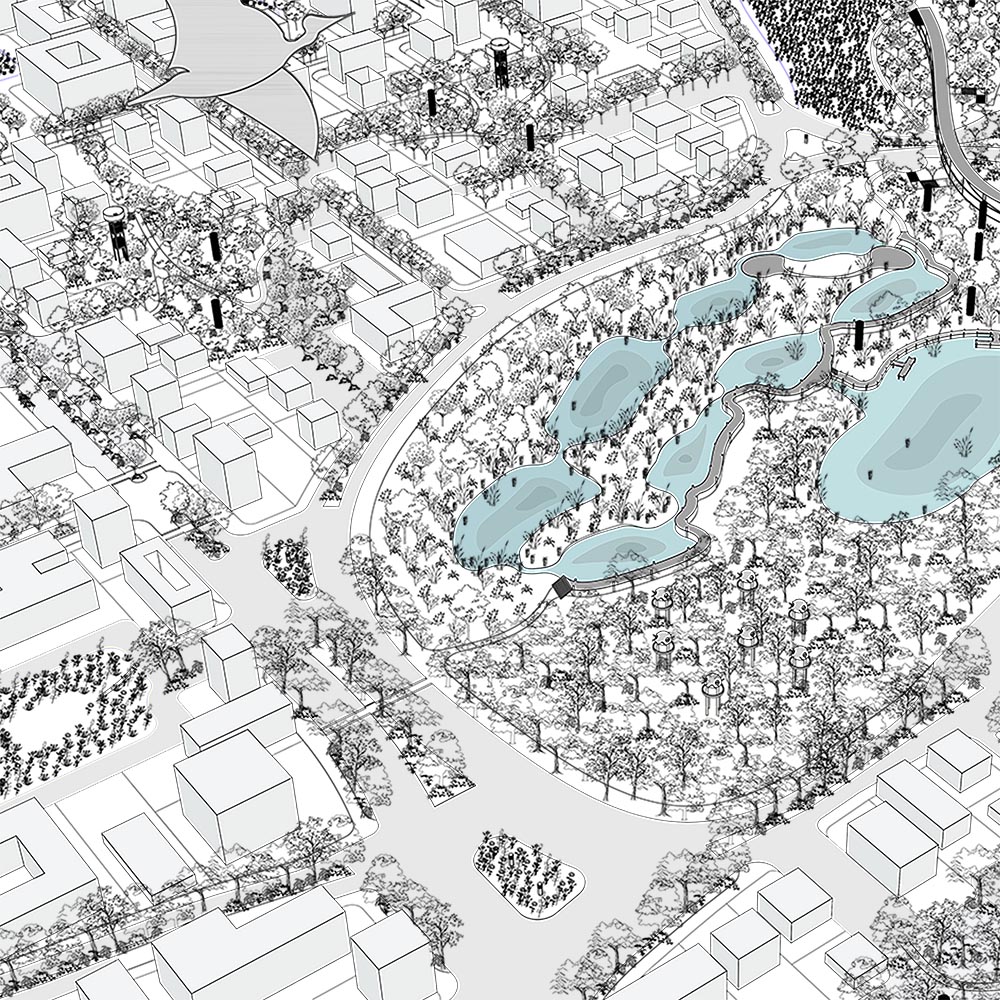The Invitation
The XL plan is a depiction of a speculation, where the city is connected with the biodiverse spaces around it, creating a pathway for the fauna to enter the the city. Each sector has large open spaces that are unused or underutilized that can be productively developed using native flora to attract the fauna into sector. The speculation entails a network of bio corridors that facilitate the movement of the fauna through the city. The unused spaces per sector rounds off unto 10% of the total sector area. These spaces can be developed to provide food as well as shelter or mere pause points for the fauna as they move through the city. The attempt is that these species can have seamless corridor and access to a large range of food networks.v
Biodiver-City: Wilderness in the backyards
-
Tags
Biodiversity, wilderness, sector design, co-inhabitat, wildness in the city, wild city
by Abhishek Mummithi
As cities become more urbanized, green spaces are quickly being engulfed by the human population that inhabits them. With losing green cover, cities are also experiencing loss of biodiversity an inevitable loss to local well-being. The need to design towards inclusion of other species into the urban realm is necessary and critical. Gandhinagar is one of the cities that has rich biodiversity, with the riparian edge, forests and botanical gardens. But the city fails to bring this biodiversity into the city where the residents can experience it in their everyday life.


Welcoming The Guests
In order for the fauna to enter move through the city there has to be some attractor points. These can be in the form of food, water or shelter. These can be provided by developing the under utilized spaces into urban forests, urban wetlands, pollinator farms that act as attractors for the fauna. The safety of the animals can be ensured by providing biodiversity connectors in the form of bridges, underpasses or simply by insertion of greener road sides and slowing devices.v

Setting Up The Table
The sector 7 is redesigned as a sector that aims at bringing wilderness into the city where the residents can live nestled in a larger forest ecosystem and experience it within their very own backyards. For this the sector is divided into more or less equal (area) urban blocks, by the secondary and tertiary street network. Each urban block consists of a central open spaces that contains various biodiversity promoting functions. The functions involve development of urban forests, small catchment areas, foraging forests, and pollinator farms. The large central open space that is a natural low lying area is developed with different functions in order to contain the fauna. The functions are distributed in order to create a connected movement trails for the specific fauna that it attracts. The design creates strategies and regulations at different scales of lot, block and sector level to create a harmonious and connected forested landscape. The attempt is that other inhabitants can have seamless corridor and access to a large range of food networks. The entire sector is connected with primary and secondary streets that have also been designed with swales and median to accommodate a continuous canopy cover.

Larger The Lot, The Merrier It Is
The outer blocks are designed with larger grain i.e. the plots and built areas are larger in order to accommodate the commercial activities. These block have buildings built to line in order to activate the streets. These blocks consists of buildings ranging from 15m to 21m in height. The inner open spaces on the other hand are comparatively peaceful with wilderness and some public spaces for the residents. Each plot is 60-70% buildable. Due to the high ground coverage and accommodation of commercial activities, the buildings must have terrace plantations and 10% green façade

Smaller The Lot, The Greener It Is
The inner blocks near the larger wilderness are ecologically sensitive zones. These blocks are predominantly residential. The grain is finer i.e. the plots and built areas are smaller in order to accommodate more greenery. These buildings range from 3m to 15m in height and the ground coverage is upto 50%. These plots have large open areas that can contain a specific flora pallet to attract specific fauna.

Cherries On The Top
Some structures can be developed in these open spaces which can house various fauna.v

The Masterpiece
The project envisages a sector where all the species are equal and can coexist together.



